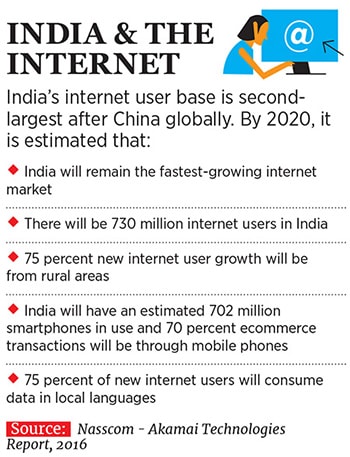Poll apps: Giving power to the people
From helping citizens register into the electoral rolls to analysing data on candidates and their performance, technology platforms are reshaping political conversations to give voters a stronger voice
 Illustartion: Chaitanya Dinesh Surpur
Illustartion: Chaitanya Dinesh Surpur Every vote counts. If that is difficult to believe, consider how in Mizoram Lalchhandama Ralte of the Mizoram National Front (MNF) won the Tuival constituency seat with just three votes more than Congress legislator RL Pianmawia. Consider how, in Rajasthan, at least 15 constituencies had more NOTA (None of The Above) votes than the victory margin of the winners. In Asind, for example, Jabbar Singh Sankhala of the Bharatiya Janata Party (BJP) defeated Manish Mewara of the Congress party by only 154 votes, while NOTA votes stood at 2,943. Finally, consider how, in Madhya Pradesh, so close was the fight between the BJP and the Congress that the winning margin in about 73 assembly constituencies was less than 5 percent.
Long story short, electoral victories can be a game of small margins. This possibly explains why political parties operating in a smartphone-savvy democracy are going all out to woo individual voters in various ways, including setting up war-rooms for social media campaigns, SMS or WhatsApp alerts, or targeted video/audio messaging. On the other hand, helping voters get past the propaganda blitzkrieg are technology platforms that teach them how to navigate the electoral system and make informed, data-driven choices.
As the general election nears, these websites or mobile applications are conducting detailed background checks on political candidates, or helping voters—predominantly urban—understand the enrolment process and timelines. Some are getting citizens to interact with their politicians directly, while others are parsing and simplifying public data to provide information about socio-political trends.
 “Technology is making citizenship cool by simplifying civic data that is relevant to people.” Sapna Karim, Head, civic participation, Janaagraha
“Technology is making citizenship cool by simplifying civic data that is relevant to people.” Sapna Karim, Head, civic participation, Janaagraha Image: Selvaprakash Lakshmanan for Forbes India
By and for the people
“Technology is making citizenship cool by simplifying civic data that is relevant to people. This will ultimately make people’s participation in governance more meaningful,” says Sapna Karim, head, civic participation at Janaagraha, the Bengaluru-based non-profit that runs I Change My City (ICMyC). With a registered user base of 10 million people, the website and mobile app connects people facing common civic issues with their local political representatives or agencies.
By the end of January, ICMyC, which is also the technology back-end for the Swachh Bharat app, will launch a digital campaign that will help citizens get registered on the voter list. It will also address concerns regarding addition, deletion or modification of enrolment data. “We will get people to download forms, get additional documents together and direct them to the state-level site where they can register their names,” explains Karim.
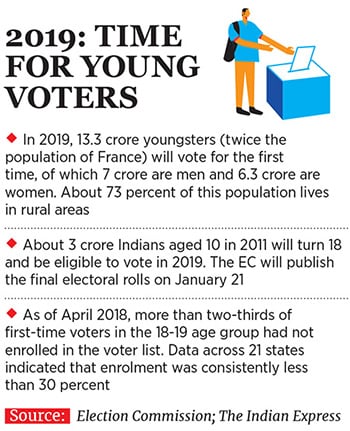
ICMyC, which launched in 2012, has also submitted a voter list manual to the Election Commission (EC), which looks at how the constitutional authority can systematically update its rolls in order to maintain high accuracy levels. “The recommendation has already gone to them. Now it is up to the EC to pilot it in at least one or two states to see how it can be scaled.” Till such time that this is done, Karim adds, it is important to get more people to register to vote so that “the pressure created by increasing demand will shock the system into taking action.”
Other civic technology platforms operating in this space, like the Delhi-headquartered Association for Democratic Reforms (ADR), are leveraging the increasing social media usage among Indians. According to market research firm Statista, there will be an estimated 258.27 million social network users in India by 2019, up from close to 168 million in 2016. This number is expected to reach 370.77 million in 2022. Capitalising on this reach, ADR, which runs the MyNeta website, is putting out survey-based election trends, easy-to-understand infographics and videos on political candidates with their financial, educational and criminal backgrounds.
According to Retired Major General Anil Verma, national coordinator of ADR, the site has data pertaining to over three lakh political candidates who have contested in state and general elections. People can also dial a toll-free number to get specific information about their constituency and candidates. “We have roughly 7,000 hits every day. When we release election reports, the hits go up to 12,000. People accessing this data are not only voters, but researchers, academicians and politicians themselves,” Verma says.
ADR’s election survey reports highlight important trends in voter behaviour, like the gradual shift towards picking candidates over political parties and the decreasing role of caste in electoral decision-making. For example, in the Karnataka assembly elections, 86 percent people voted for the candidate, while those voting for a political party, religion and caste stood at 67 percent, 37 percent and 36 percent, respectively.
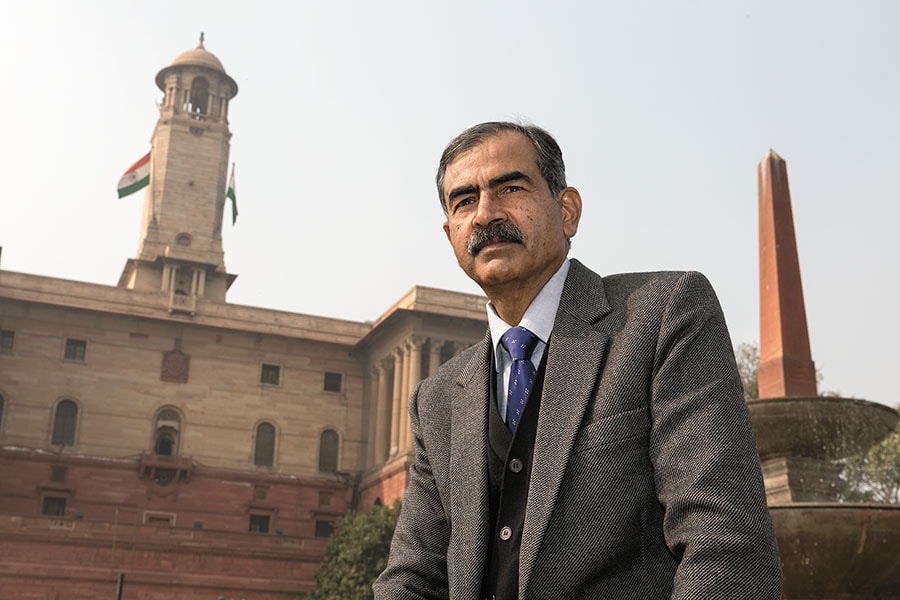 “The road to electoral reforms is a long one. No government or political party wants to improve on its own.” retired Major General Anil Verma, NATIONAL coordinator, Association for Democratic Reforms (ADR)
“The road to electoral reforms is a long one. No government or political party wants to improve on its own.” retired Major General Anil Verma, NATIONAL coordinator, Association for Democratic Reforms (ADR)Image: Madhu Kapparath
In Rajasthan, the survey highlights an interesting trend of how 61 percent people voted on their own, while 18 percent were influenced by their spouse, followed by 18 percent voting because of other family members. Only 1 percent voter behaviour was influenced by caste or community leaders.
Verma admits that while they do not have the resources to determine the impact or reach of their data, their aim is to put as much information in the public domain as possible, in order to build collective awareness. “The road to electoral reforms is a long one. No government or political party wants to improve on its own. Today, most of the reforms we see are because of judicial interventions or court judgements,” he explains. “So, along with making sense of data, we also have a legal team that keeps filing Public Interest Litigations (PILs).”
While ICMyC and ADR are non-profits functioning on donations and grants, individuals like Pratham Mittal are channelising this data to build companies that provide metrics based on which people can judge candidates. This way, they also generate data to predict and quantify voter behaviour. Mittal’s Neta app (available on Android and iOS platforms) helps people rate their local candidates on parameters like law and order, governance, economic reforms and corruption. People can also leave video messages for politicians.
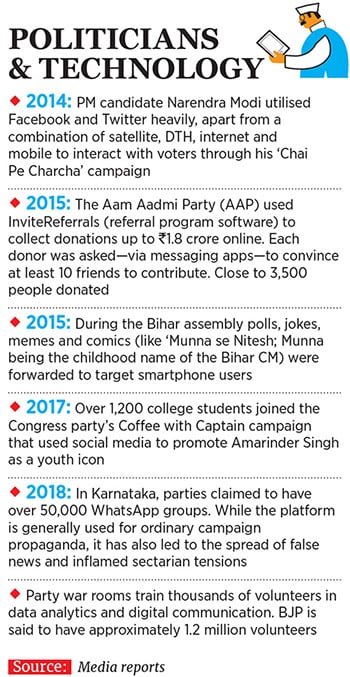
Since its launch in January 2018, Mittal claims that over two crore people have rated their leaders on the app, with the platform polling over 35 lakh and 45 lakh votes in the recently-concluded elections in Madhya Pradesh and Rajasthan respectively. Mittal aims to clock 10 crore votes on the app before the general elections.
“Citizen ratings can actually be early indicators of a leader or party’s performance in the polls,” he says. Giving an example of the neck and neck battle in Madhya Pradesh, Mittal explains how citizen rankings polled on Neta proved to be 98 percent accurate when they indicated that the Congress will win 112 seats and the BJP will have 106 seats (final results had Congress win 114 seats and BJP bag 109 seats). Similarly, the app clocked a 96 percent accuracy rate in Rajasthan.
“The infrastructure barrier, which existed two-three years ago, is now gone with better internet penetration. The next-level challenge is voter education, which often leads to user experience issues on the platform. The focus is to address this first,” says Mittal. As an engineering and political science student at the University of Pennsylvania, he had launched Outgrow, a platform that enables polling on websites. He does not plan to similarly monetise Neta right away, but is seeking strategic investments in media companies, which, he believes, is a “neutral way of getting into the data business.”
Getting the act together
Experts say that while technology-enabled participatory democracy is a good idea on paper, on-ground implementation is not without its practical troubles. Arun PS, a Kerala-based lawyer who has done extensive research on pre-legislative public consultation, believes that people have traditionally been kept out of the policy-making process, which is why today they do not know the extent to which they can engage with or influence lawmakers.
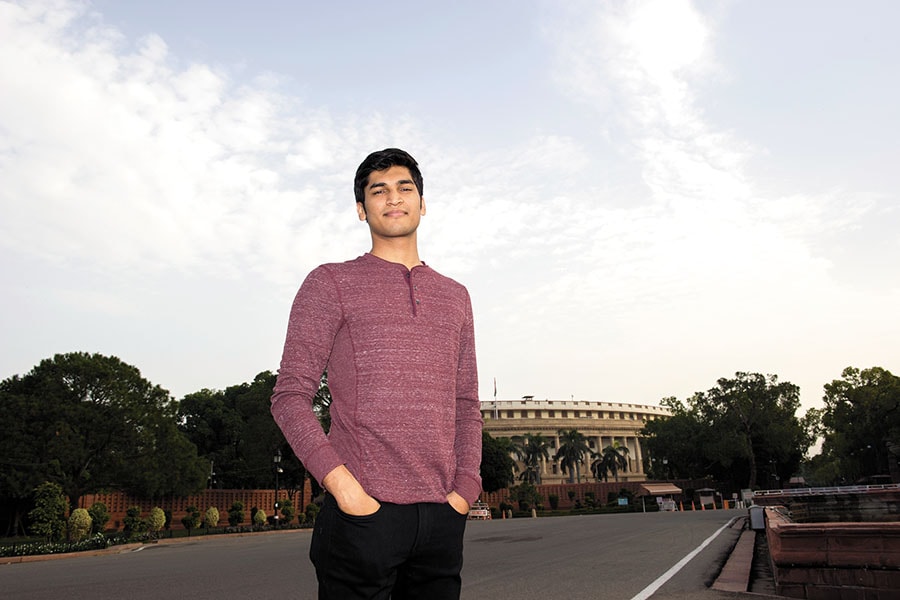 “The infrastructure barrier is now gone with better internet penetration. The next-level challenge is voter education.” Pratham Mittal, founder, Neta App
“The infrastructure barrier is now gone with better internet penetration. The next-level challenge is voter education.” Pratham Mittal, founder, Neta App Image: Amit Verma
Public participation has never been a top priority for the government, he explains, giving the example of the pre-legislative consultation policy. Introduced by the United Progressive Alliance (UPA) government in 2014, the policy directs government departments to simplify draft legislations and invite public comments or objections. “This policy is hardly implemented, because even recently the government moved to introduce major bills like Triple Talaq Bill, RTI Amendment Bill and Aadhaar Amendment Bill without public consultation. Many stakeholders are not even aware that they could register their opinions or objections,” points out Arun.
According to him, technology platforms can become powerful intermediaries. “They can bridge the gap between people and politicians, and ensure that citizens have a say in law-making,” he says. “Then again, these organisations have their own limitations and cannot be very impactful if the government itself does not welcome or streamline the process.”
(This story appears in the 01 February, 2019 issue of Forbes India. To visit our Archives, click here.)

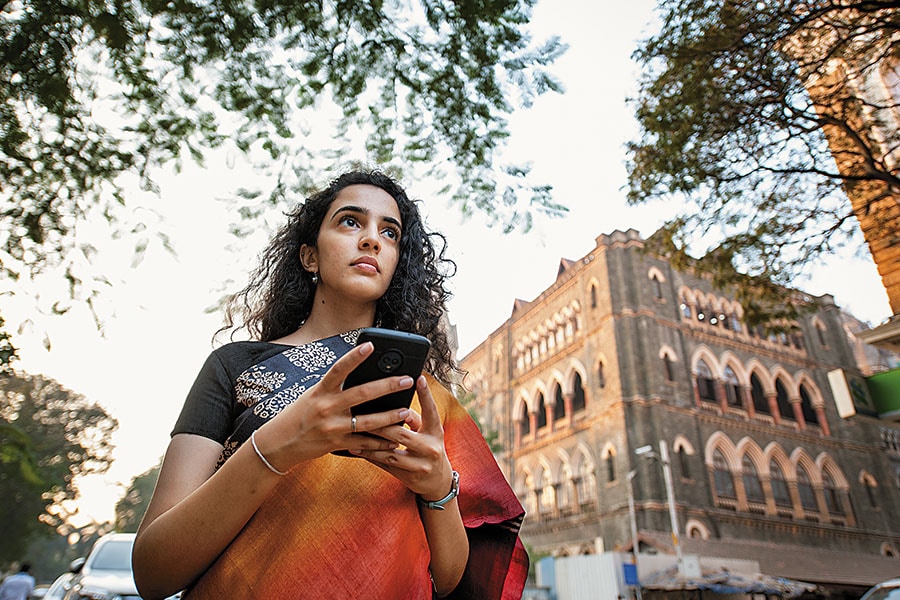 "We have to find solutions that will engage people in multiple languages, which gives platforms like ours a wider scope.” Antaraa Vasudev, founder, Civis
"We have to find solutions that will engage people in multiple languages, which gives platforms like ours a wider scope.” Antaraa Vasudev, founder, Civis